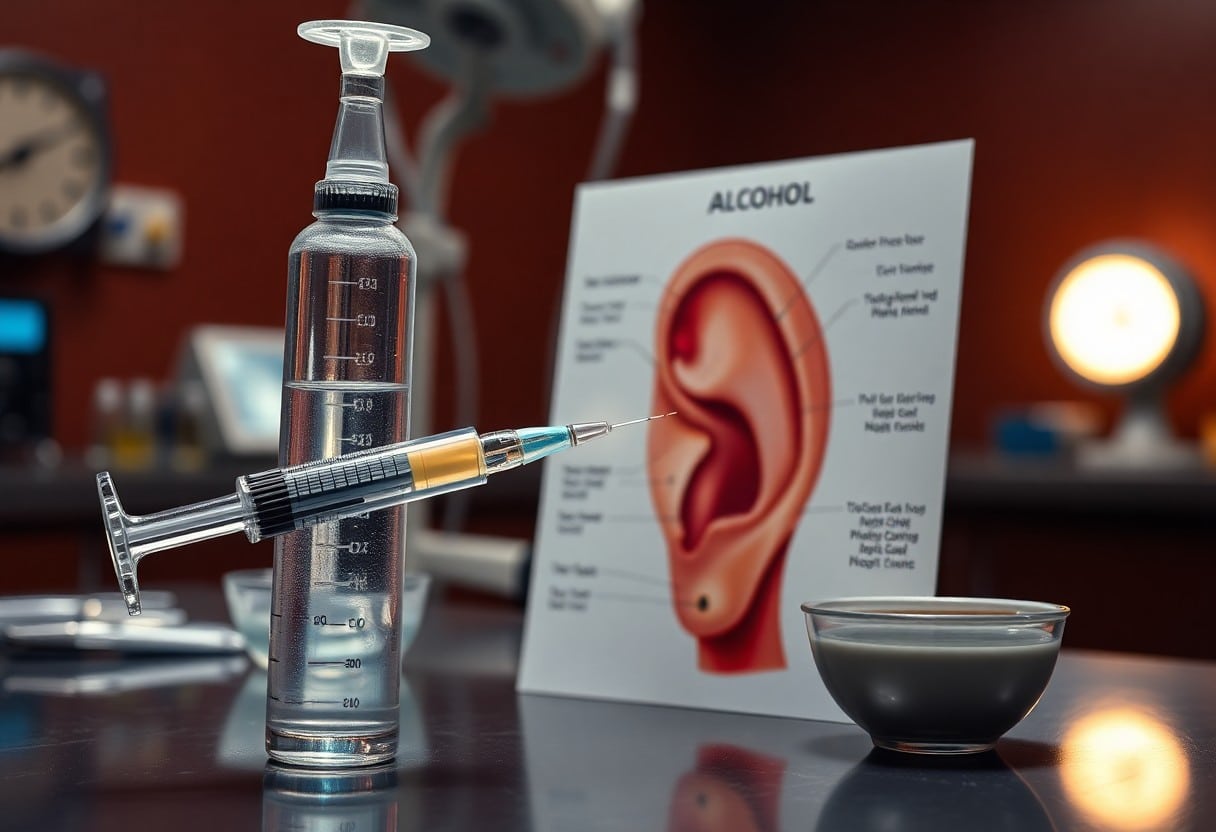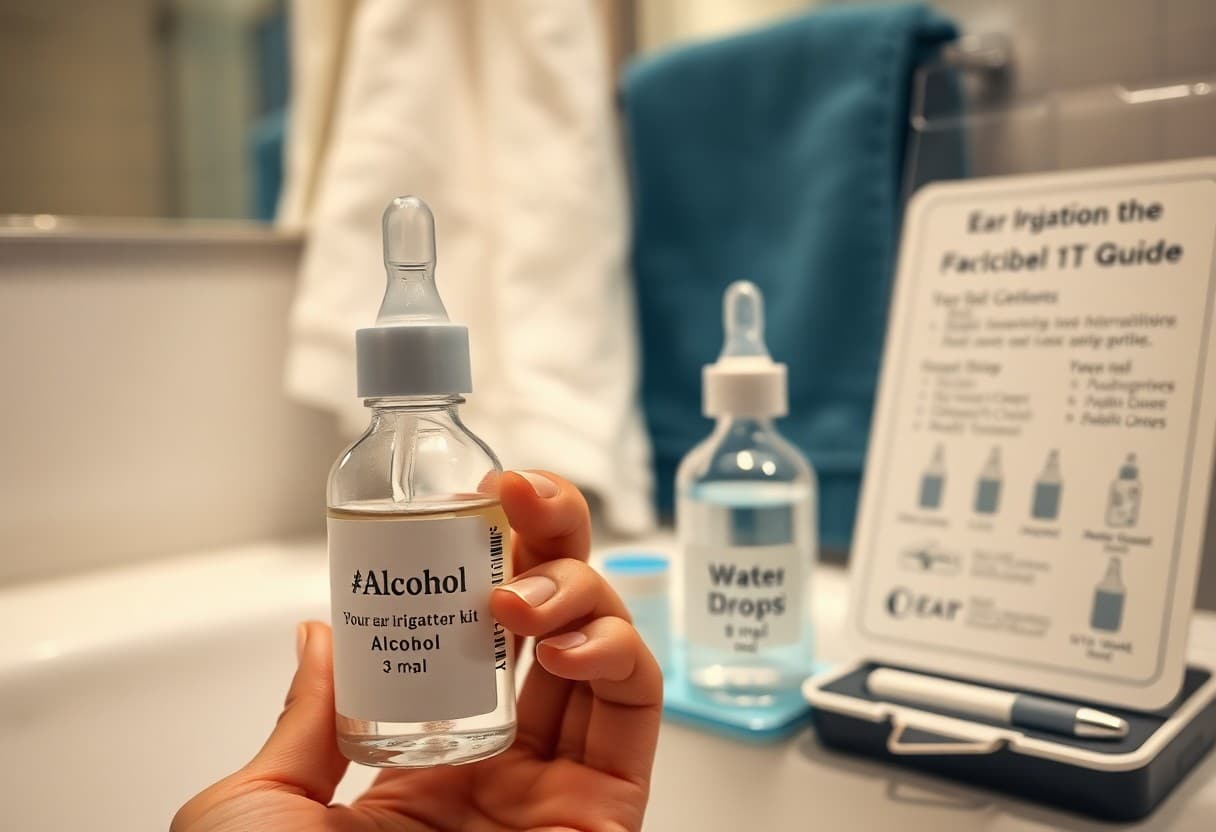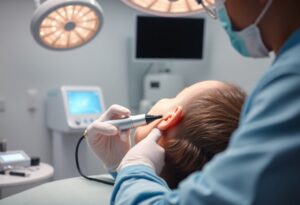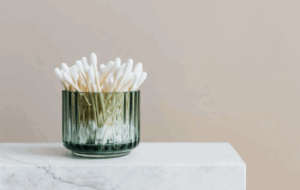Over time, proper ear care after irrigation is crucial for maintaining ear health. After using water to flush your ears, you may wonder whether to use alcohol or water drops for post-irrigation care. Each option has its benefits and drawbacks, affecting how well your ears dry, their comfort level, and the risk of infection. Understanding the differences between these methods will help you make an informed decision for your ear care routine.
Key Takeaways:
- Using alcohol drops can help dry out excess moisture in the ears after irrigation.
- Water drops may not effectively prevent infections or provide the same drying benefits as alcohol.
- Post-irrigation care should focus on preventing moisture buildup to reduce risk of ear infections.

The Anatomy of Ear Irrigation and Its Impact on Ear Health
Understanding Ear Irrigation Techniques
Various techniques for ear irrigation can be employed, including the use of saline solutions, water, or specialized ear drops. Typically, these methods involve the introduction of a liquid into the ear canal to facilitate the removal of excess wax or debris. The choice of technique may depend on your specific ear health needs, with healthcare professionals often utilizing an otoscope for visibility during procedures to prevent damage to your ear structures.
The Biological Response to Irrigation
Your body reacts to irrigation through processes aimed at restoring homeostasis within the ear. This includes the stimulation of the ceruminous glands, which produce earwax to protect the ear canal from pathogens and debris. Additionally, you may experience transient sensations such as fullness or slight discomfort, as the body engages its natural mechanisms to manage moisture and cleanse the area.
The Alcohol Approach: Risks, Benefits, and Best Practices
Alcohol as a Disinfectant: Efficacy in Ear Care
Alcohol serves as an effective disinfectant, rapidly killing bacteria and drying out moisture in your ears. When used correctly, alcohol drops help prevent infections that can arise after ear irrigation. The rapid evaporation of alcohol creates an inhospitable environment for pathogens, aiding in ear hygiene and overall health. Studies have shown that isopropyl alcohol concentrations between 60-70% are optimal for disinfectant properties, making them a suitable choice for post-irrigation ear care.
Potential Adverse Effects and When to Avoid Alcohol
Using alcohol improperly in your ears can lead to irritation, allergic reactions, or even damage to the delicate skin inside the ear canal. It’s best to avoid alcohol if you have existing ear conditions, like perforated eardrums or sensitive skin, which can exacerbate discomfort and lead to complications. In these cases, you ought to opt for safer alternatives that won’t jeopardize your ear health.
Individuals with a history of ear infections, dermatitis, or those who experience discomfort after using alcohol should be cautious. Notably, applying alcohol into a perforated eardrum can introduce bacteria to the inner ear, increasing the risk of severe complications, including hearing loss. Given these risks, seek professional advice if symptoms persist or if you have concerns about using alcoholic solutions for ear care.
The Role of Water Drops in Post-Irrigation Care
How Water Aids in Healing and Hydration
Water serves as a vital component in post-irrigation care by providing necessary hydration to the ear canal. Adequate moisture supports natural healing processes, prevents dryness, and maintains the integrity of the skin in this sensitive area. This environment encourages cell regeneration and reduces the risk of infection, allowing your ears to recover effectively.
Comparative Hydration: Water vs. Alcohol
While both water and alcohol can be used in the ear care process, their hydration capacities differ significantly. Water replenishes moisture without irritating the skin, whereas alcohol tends to dehydrate, potentially leading to complications. Choosing water over alcohol post-irrigation promotes a more favorable healing atmosphere.
Comparative Hydration: Water vs. Alcohol
| Aspect | Water | Alcohol |
|---|---|---|
| Hydration Effectiveness | High | Low |
| Skin Irritation | Minimal | High |
| Healing Support | Promotes healing | May hinder healing |
| pH Levels | Neutral | Acidic |
Water provides superior hydration compared to alcohol due to its neutral pH and compatibility with body tissues. In contrast, alcohol’s acidic nature can lead to dryness and irritation, undermining the delicate equilibrium needed for effective healing. Prioritizing water in your post-irrigation ear care routine supports your body’s natural defenses and accelerates recovery, making it the preferable choice for maintaining ear health.
The Science of pH Balance and Ear Health
The Importance of pH Levels in the Ear Canal
Your ear canal maintains a delicate pH balance that is important for optimal health. Typically, the pH levels range from 4.5 to 5.5, creating an acidic environment that helps prevent the growth of harmful bacteria and fungi. Disruptions in this balance can lead to infections, discomfort, and even hearing issues. Maintaining proper pH is fundamental to ensuring your ear canal remains healthy and free from pathogens.
How Alcohol and Water Affect pH Post-Irrigation
The way alcohol and water interact with your ear canal can significantly influence its pH. While water helps restore the natural acidity after irrigation, alcohol has a drying effect that can raise pH levels, leading to an alkaline environment. This shift can create favorable conditions for bacteria and fungi, increasing your susceptibility to ear infections.
Water is generally your best ally in restoring pH balance post-irrigation. Using sterile, distilled water can help bring the ear canal back to its optimal acidity. In contrast, alcohol, although effective in disinfecting, can disrupt this balance and promote a less healthy environment if used excessively. A post-irrigation routine involving gentle water drops is recommended to neutralize any pH fluctuations and support ear health more effectively than alcohol-based solutions.
User Experiences: Alcohol vs. Water Drops in Post-Irrigation Recovery
Anecdotal Evidence and Common Practices
Users often share mixed experiences regarding alcohol and water drops post-irrigation. Some find that using alcohol drops provides a quick drying effect, minimizing moisture retention, while others report discomfort from the tingling sensation that alcohol can cause. Many individuals prefer water drops, citing a gentler approach that enhances comfort without the potential sting of alcohol, promoting a more soothing recovery process.
Professional Insights: Audiologists Weigh In
Audiologists recommend understanding the unique needs of your ears when choosing between alcohol and water drops. They note that while alcohol can combat bacteria and prevent infections, it can also cause irritation to sensitive tissue. In contrast, water drops promote hydration and support natural healing processes, suggesting that water may be the better choice for those prone to discomfort.
Audiologists emphasize the importance of individual ear health and personal sensitivity levels. For example, patients with a history of sensitive ears might experience adverse reactions to alcohol, making water drops a preferable option. Additionally, studies indicate that frequent alcohol use post-irrigation can lead to dryness and inflammation, whereas water not only alleviates these issues but also helps maintain the ear’s natural moisture balance. Each person’s experience differs, highlighting the necessity of considering personal comfort and ear health when making a selection.

Practical Guidelines for Optimal Ear Care After Irrigation
Recommended Protocols for Different Scenarios
After irrigation, your approach to ear care depends on the specific situation. If you experience mild discomfort, lying on your side may help facilitate drainage. For persistent sensations of fullness, applying a warm compress can encourage fluid movement. If allergic reactions or infections occur, consult a healthcare provider for appropriate treatments, as these require professional intervention to ensure proper healing.
DIY Remedies: Safe and Effective Practices
Simple DIY remedies can enhance your ear care routine post-irrigation. Items like warm olive oil may soothe irritation, while diluted white vinegar can restore balance in your ears’ ecosystems. Both options are cost-effective and readily available, allowing you to manage minor discomforts safely at home.
For effective application, warm the olive oil slightly before using a dropper to apply 2-3 drops into the affected ear. This warmth helps alleviate discomfort while moisturizing the ear canal. Alternatively, mix equal parts white vinegar and water, using it as a gentle rinse following irrigation. This process may help prevent bacterial growth, reducing the risk of infection. Tracking your response to these remedies ensures you’re addressing issues appropriately and can help guide your choices in the future.
Preventative Measures: Ensuring Long-Term Ear Health
Avoiding Irrigation Necessity: Proactive Strategies
Implementing proactive ear care strategies can significantly reduce the need for irrigation. Regularly cleaning your ears with a damp cloth, avoiding cotton swabs, and using ear drops can help maintain ear hygiene. Staying away from swimming in dirty water and protecting your ears from excessive moisture during showers are also key to preventing earwax buildup and infections.
Assessing Risk Factors in Ear Care
Understanding the risk factors associated with ear health is vital for effective prevention. Factors such as your occupation, lifestyle habits, and existing medical conditions can contribute to ear problems. For instance, individuals in dusty environments or those exposed to loud noises may be at a higher risk for hearing loss and ear issues. Regular check-ups can aid in identifying these risks early, allowing you to take appropriate action.
- Identify occupational hazards, such as noise exposure.
- Evaluate personal hygiene practices related to ear care.
- Understand family history regarding ear health issues.
Addressing these risk factors requires a solid understanding of your environment and behaviors. For example, if you frequently engage in water sports, consider using earplugs designed to prevent water ingress. Evaluate any underlying conditions like allergies or sinus issues that might affect your ears. Early awareness can steer you toward adopting preventative measures, enhancing the long-term health of your ears.
- Consult with a healthcare professional regarding chronic conditions.
- Limit exposure to loud sounds and consider protective gear.
- Stay informed about potential allergens in your environment.
The Future of Ear Care: Innovations and Recommendations
Emerging Products: What’s on the Market?
New products are entering the ear care market, focusing on convenience and efficacy. For example, ear drops infused with natural extracts like tea tree oil and aloe vera promise to soothe irritation while promoting a healthy ear environment. Additionally, innovative irrigation systems featuring precise temperature control and smartphone compatibility are now available, allowing personalized care tailored to individual needs.
The Role of Technology in Ear Health Monitoring
Wearable devices are revolutionizing ear health monitoring, allowing you to track various auditory metrics. These gadgets can detect changes in ear pressure, humidity levels, and even early signs of infection, providing real-time feedback directly to your smartphone. With this capability, you can proactively manage ear health and seek medical attention before issues escalate.
Recent advancements include apps that connect to smart ear devices, offering personalized tips based on your ear’s conditions. For instance, these apps can remind you when to clean your ears, suggest optimal irrigation techniques, and even alert you if moisture levels are too high, minimizing the risk of infections. This integration of technology ensures that you have the tools necessary for maintaining optimal ear health without the guesswork.
To wrap up
On the whole, understanding the differences between alcohol and water drops for post-irrigation ear care is imperative for maintaining your ear health. While alcohol drops can help dry out residual moisture and prevent infections, water drops provide a gentler alternative for those with sensitive ears. You should choose based on your specific needs and any advice from your healthcare provider. Proper care after ear irrigation ensures that your ears remain comfortable and free from complications, promoting overall wellbeing.
FAQ
Q: What are the primary differences between alcohol and water drops for ear care?
A: Alcohol drops typically help to dry the ear canal faster and reduce the risk of bacteria growth, whereas water drops are generally used to flush out debris and hydrate the ear. Each serves a different purpose in post-irrigation care.
Q: When should I use alcohol drops after irrigation?
A: Alcohol drops are recommended after irrigation when you want to ensure thorough drying of the ear canal and minimize moisture that can lead to infections.
Q: Are water drops a better option for someone with sensitive skin in the ear?
A: Yes, water drops can be gentler for those with sensitive skin, as they provide hydration without the potential irritation that alcohol may cause.
Q: How often should I use either type of drop post-irrigation?
A: It is advisable to use alcohol drops once after each irrigation session for drying, while water drops may be used as needed to soothe and hydrate the ear.
Q: Can using alcohol drops cause any adverse effects?
A: While alcohol drops are generally safe, overuse or improper application can lead to dryness or irritation in the ear canal. It’s best to follow guidelines or consult a healthcare professional if concerned.



